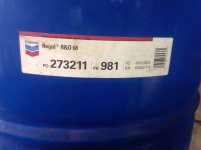No not really. The tolerance of the ways, carriage, compound, the type of tooling and their setup. Machine rigidity, flat and true of the X&Z axis. All machines have twist, and parallel issues. Any time you use a tailstock you throw out the window most of the accurate setup you though you had. Tools with less than stable setup and tool pressure will allow a boring bar to run all over the place. Drill a hole with a drill mounted in a tailstock, with a drill chuck and a MT shank, then use a boring bar with upwards of 10-1 overhang and you will never true that hole back up. After you bored the hole which is still out of round a tenth or more and the reamer will telegraph that runout into the finished chamber.
You can have the best bearings in the world and the runout of the chamber will be the result of the unstable tooling practices, ,,,not the spindle bearings.
A lathe is not a grinder. what I hear being claimed about budget import equipment is quite a stretch.Every time you move the carriage, compound and heaven forbid the tailstock,,, you could have easily put the TIR into the .000+ range, not .0000.. It's not an easy task running parts and keeping them all under .0002 As the machine warms up you really start chasing ghosts as everything moves. Then there's the issue of the cutting tools inconsistency.
Nothing that has motion whether its rotary, linear.... Will move without some clearance, and that all adds up.
Chambering PPC or 6BR cases with a ~1.625 length is child's play compared the long chambers for some of today's Magnum calibers.
Look At the guys that claim accuracy in tenths, with old flat belt lathes and sleeve bearings.


